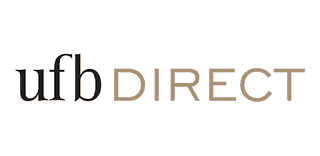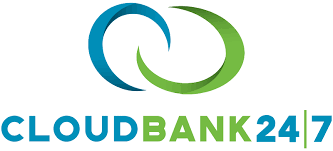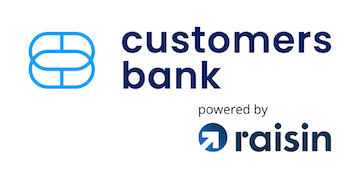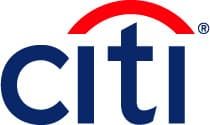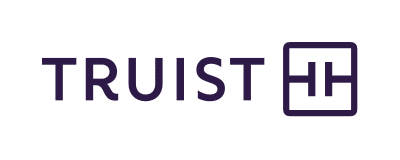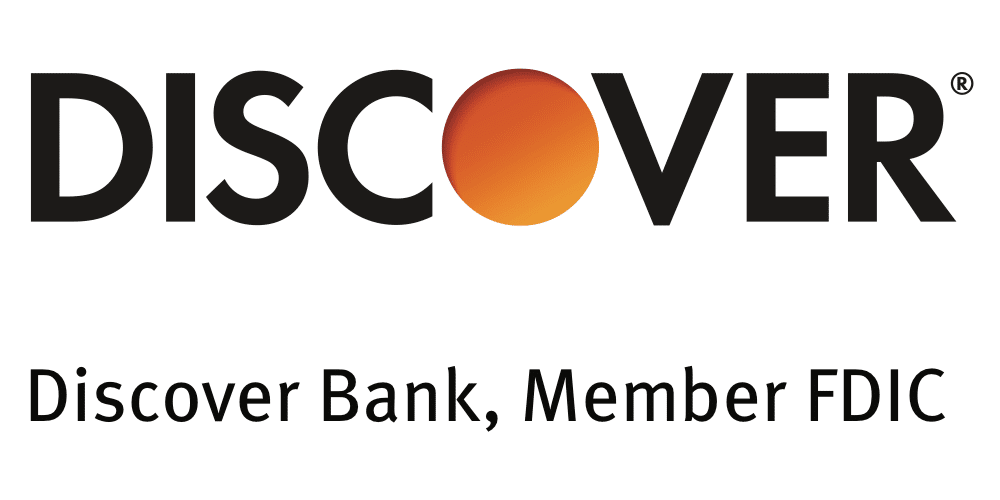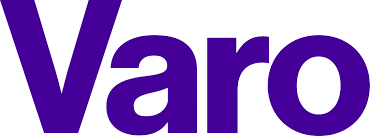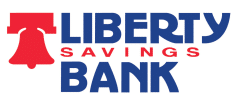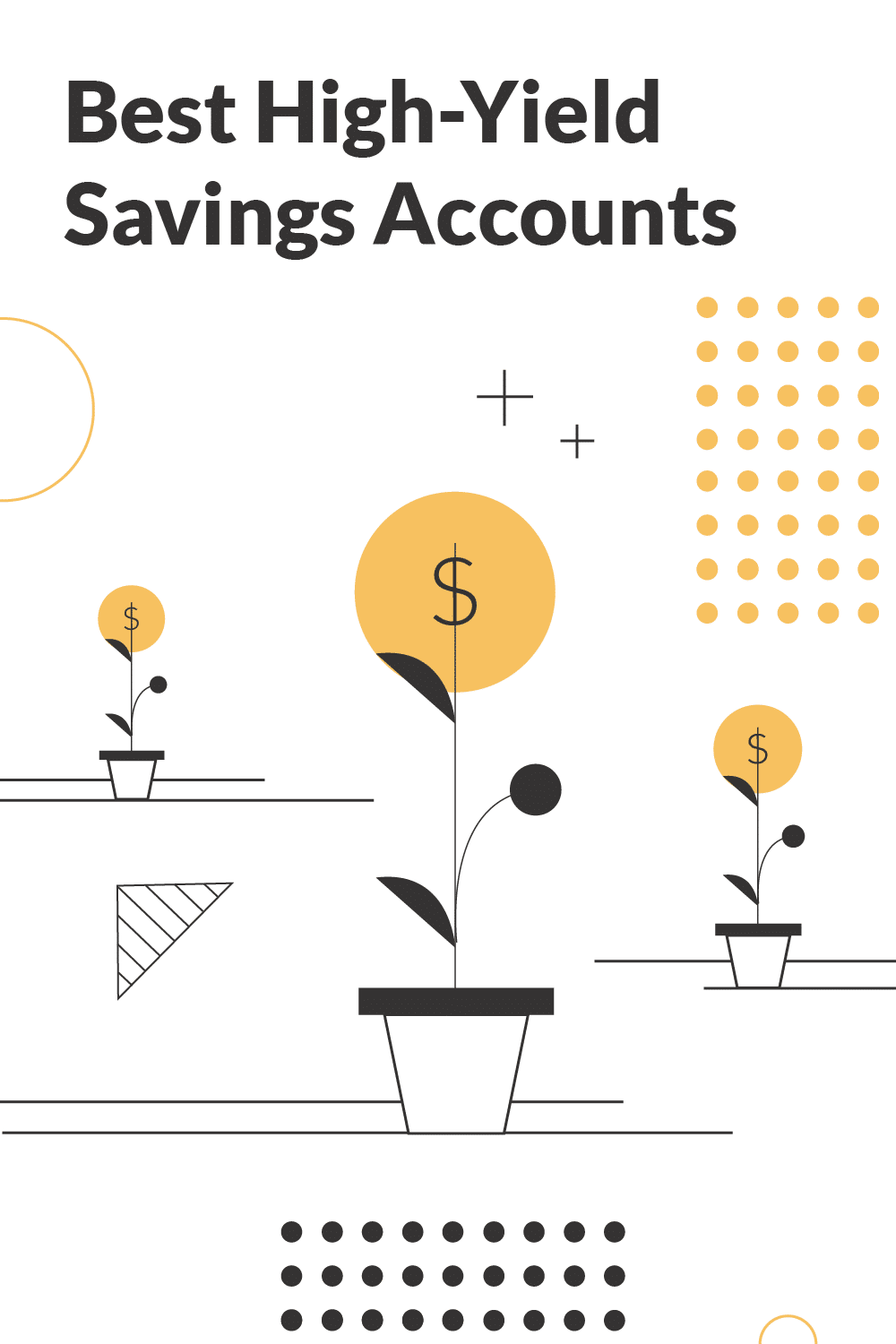The best high yield saving accounts are currently earning an annual percentage yield (APY) of 5% or more. Our list of high-yield savings accounts earn much more interest than the national average of 0.47%.
If you're looking to get a better interest rate on your savings, you need to find the best high yield savings account out there. High yield savings accounts are popular because they typically pay more than a traditional account.
You usually find the best high yield savings accounts at online banks, since their overhead is lower. They then pass that savings on to you in the form of higher interest on your money!
We break down our favorite high yield savings accounts, as well as provide a list of the best savings accounts everyday in our table that updates daily. Given that interest rates change daily, make sure you check the table to get the best rates.
Plus, several of the banks on our list have awesome bonus offers. When you combine the bonus with an already high annual percentage rate (APY), you win!
Why Should You Trust Us?
The College Investor has been actively tracking the best savings account rates since 2018, with a daily updated list that monitors roughly 50 banks and credit unions that have a history of great rates. But we also are always scouting out other banks that may compete on this list.
Unlike other well-known companies who create "best savings account rate lists", we strive to put out rates in order highest to lowest so that you can know you're actually getting the best rate. And if you don't make the cut, too bad. You can find the full list of our bank review here.
Our Picks Of The Best High Yield Savings Accounts
Here's a quick breakdown of the best savings accounts for your money right now. We sort our list by the highest interest rate first - no gimmicks!
Note: Annual percentage yields (APYs) shown are as of April 24, 2024. The College Investor's team updates this information regularly, typically Monday-Friday. Rates may have changed since they were last updated and may vary by region for some products.
Bank Name | APY | Get Started |
|---|---|---|
At Western Alliance Bank, Member FDIC | ||
At Axos Bank, Member FDIC | ||
At American First Credit Union, NCUA | ||
At Third Coast Bank, Member FDIC | ||
At Cross River Bank, Member FDIC | ||
At Comenity Capital Bank, Member FDIC | ||
At Customers Bank, Member FDIC | ||
$5,000 Min Balance | At CIT Bank, Member FDIC | |
At Green State Credit Union, NCUA |
Bank Name | APY |
|---|---|
At Western Alliance Bank, Member FDIC | |
At Axos Bank, Member FDIC | |
At American First Credit Union, NCUA | |
At Third Coast Bank, Member FDIC | |
At Cross River Bank, Member FDIC | |
At Comenity Capital Bank, Member FDIC | |
At Customers Bank, Member FDIC | |
At CIT Bank, Member FDIC | $5,000 Min Balance |
At Wealthfront | |
At Green State Credit Union, NCUA |
The Full List Of Top Savings Account Options
We evaluate savings accounts based on their annual percentage rate (the interest you receive), the minimum balance requirements, locations available, and the terms and conditions of having the account. We may receive compensation from some or all of the companies listed below. Here are our recommendations of the best high yield savings accounts.
1. Western Alliance Bank - 5.36% APY
Western Alliance Bank was founded in 1994 and is now one of the top 50 banks in the United States by amount of deposits. They currently offer a high-yield savings account with a very competitive rate.
This account has just a $500 minimum deposit to open and no account activity or maintenance fees.
Right now, you can earn 5.36% APY¹ on your deposits. And yes, it's FDIC insured!
Read our full Western Alliance Bank review here.
2. UFB Direct - 5.25% APY
UFB Direct has recently come out with a solid offering for high yield savings. The only drawback to this account is that it is tiered - however, right now all of the tiers are the same. Just keep in mind that this could change in the future.
Here's what the savings tiers look like:
Balance Tiers | APY |
|---|---|
$0 - $9,999 | 5.25% |
$10,000 - $24,999.99 | 5.25% |
$25,000 - $49,999.99 | 5.25% |
$50,000 - $99,999.99 | 5.25% |
$100,000+ | 5.25% |
Their savings account has no minimum deposit or balance required and $0 monthly maintenance fees.
Right now, they offer one of the highest rates at 5.25% APY! And, of course, it's FDIC Insured.
Read the full UFB Direct review here.
3. American First Credit Union - 5.24% APY
American First Credit Union is a regional credit union located in California that offers one of the top yielding online savings accounts right now. In partnership with Raisin, you can open a high-yield savings account at American First Credit Union online.
This account has just a $1 minimum deposit to open and no monthly maintenance fees.
Right now, you can earn 5.24% APY on your deposits. And yes, it's NCUA insured!
4. Cloudbank 24/7 - 5.24% APY
Cloudbank 24/7 is a digital bank offered by Third Coast Bank SBB. They are FDIC insured, and place a huge focus on cyber security. This account is offered in partnership with Raisin, so you can open a digital savings account.
This account has just a $1 minimum deposit to open and no monthly maintenance fees.
Right now, you can earn 5.24% APY on your deposits. And yes, it's FDIC insured!
5. Upgrade Premier Savings - 5.21% APY
Upgrade just launched their savings account to compliment their already popular free checking account. The Upgrade Premier Savings account is a top-yielding savings account with no monthly maintenance fees.
Right now, you can earn 5.21% APY on your account.
There is no minimum balance to open your account, but you will only earn the APY on days when the closing balance of your Premier Savings account is or exceeds $1,000. On days when the account closing balance drops below $1,000, the APY will be 0%.
It's important to remember that Upgrade is a financial technology company, not a bank. Premier Savings accounts are provided by Cross River Bank, Member FDIC.
Read our full Upgrade review here.
6. Bread Financial - 5.15% APY
Bread Financial is a rebrand of Comenity Direct, and has an online high yield savings account that rivals most well-known banks. Plus, this bank has no hidden fees and they make accessing your money easy!
Right now they offer a great rate at 5.15% APY, with just a $100 minimum balance and no monthly maintenance fees!
You can also earn interest on up to $10,000,000 - which is extremely generous compared to most accounts.
Read our full Bread Financial review here.
7. Customers Bank - 5.11% APY
Customers Bank was founded in 2009 and is now one of the top 100 banks in the United States. Even better, it has an awesome online savings account. In partnership with Raisin, you can open a high-yield savings account at Customers Bank online.
This account has just a $1 minimum deposit to open and no monthly maintenance fees.
Right now, you can earn 5.11% APY on your deposits. And yes, it's FDIC insured!
Read our full Customers Bank review here.
8. CIT Bank - 5.05% APY
The CIT Bank Platinum Savings is one of our top accounts because they consistently have one of the highest interest rates offered to consumers. Also, their platform in incredibly easy to use, with the ability to sign up and get started in minutes.
CIT Platinum Savings a two-tiered savings account. Right now you can earn up to 5.05% APY with a $5,000 minimum balance. Otherwise you'll earn 0.25% APY. See website for full details.
There is a $100 minimum deposit required to open an account. Read our full CIT Bank review here.
9. Wealthfront - 5.00% APY
Wealthfront is known for their robo-advisor, but they also offer an amazing cash management account that pays a top yield on the total balance!
This account allows you to earn the top rate on your total balance, is FDIC-insured up to $5,000,000 ($10 million for joint accounts) through its partner banks, has no account fees, and no overdraft fees.
Right now you can earn up to 5.00% APY.
Read our full Wealthfront review here.
10. Green State Credit Union - 4.75% APY
Green State Credit Union has been around since 1938, and has grown to be one of the largest credit unions in the United States. This account is offered in partnership with Raisin, so you can open a digital savings account that's available nationwide.
This account has just a $1 minimum deposit to open and no monthly maintenance fees.
Right now, you can earn 4.75% APY on your deposits. And yes, it's NCUA insured!
What About The Biggest Banks In The United States?
You might be looking at the list above and wondering: "I don't recognize any of those bank names". And honestly, that might make you feel a little uncomfortable - can you actually trust these banks? But you shouldn't care about the name of the bank - you should focus on the interest rate you're going to earn, whether a bank is FDIC-insured, whether you can easily access your money, and how you feel about the online experience. See our guide to this below.
Don't just take our word for it - check out the largest banks in the United States for yourself below and see why they aren't in our list of the best high yield savings accounts. Their rates just don't make the cut, and/or they have fees or minimum balance requirements that are really tough to meet (seriously, like $1,000,000 just to earn a semi-decent interest rate).
Here's the list of top banks ordered by size (amount of deposits), their current savings rates, and more for you to think about.
Chase
Chase Bank is the largest bank in the United States. It has a popular checking account, but honestly, it is terrible when it comes to savings accounts.
Right now, the Chase Savings account only earns 0.01% APY. Seriously, that's essentially nothing.
Read our full Chase bank review here.
Bank of America
Bank of America is the second largest bank in the United States, and along with Chase, it offers a terrible savings account option.
Right now, the Bank of America Advantage Savings account earns only 0.01% APY. As close to nothing as you can earn.
Read our full Bank of America review here.
Citi
Citi is the third largest bank in the United States by deposits, and it does offer better rates on it's savings account than most. However, to get the best rates and terms, you need to open their savings account along with a checking account, and to avoid fees, you have to maintain certain balances. It's all too much.
The Citi Advantage Savings Account currently earns 0.03% to 0.12% APY, which, as you can see, is well below the best savings account rates.
Read our full Citibank review here.
Wells Fargo
Wells Fargo is another incredible well-known national bank, but another big brand that you shouldn't use for your savings account. Wells Fargo has a tiered savings account system.
The highest rate you can currently earn at Wells Fargo is 2.50% APY, but that's only if you have $1,000,000 or more deposited. For the average saver with $99,999 or less, you're going to earn just 0.25% APY.
Marcus by Goldman Sachs
Marcus by Goldman Sachs is a great choice for people looking for a top notch high yield savings account. With consistently high interest rates, no fees, and no minimums, we love Marcus by Goldman Sachs.
They do have generous transfer limits to get money in and out of the account, but they don't offer mobile check deposit, which could make it difficult if you have an "old fashioned" check to deposit.
Right now you can earn 4.40% APY.
Otherwise, check out Marcus to earn top rates. Read out full Marcus by Goldman Sachs review here.
Morgan Stanley
Morgan Stanley is typically known for it's investment arm, but it's also one of the largest banks in the United States. Morgan Stanley bank offers some checking and savings options.
They currently advertise 0.51% APY on their Investor Savings account.
Read our full Morgan Stanley review here.
U.S. Bank
US Bank is another well-known nationwide bank, that offers a full suite of checking and savings products (including both personal and business checking). For a long time, they were known as having lackluster rates, but that's been changing.
They don't make the top of our list, but they currently advertise up to 4.25% APY for balances over $25,000. That's not too bad.
Read our full U.S. Bank Review here.
Truist
Truist is the product of a merger between SunTrust Bank and BB&T Bank. Both of which historically had great savings account rates. However, Truist does not continue that.
They currently advertise just 0.01% APY on their Truist One Savings Account.
Read our full Truist Bank review here.
PNC
PNC Bank has been growing in popularity over the last several years, and one of the reason is that they are one of the few banks on this list that has competitive savings rates. They're not the top, but they could be making the best-of list anytime.
Right now, you can earn 4.65% APY on the PNC High Yield Savings Account.
Read our full PNC Bank review here.
Schwab
Schwab rounds out the list of the biggest banks in America. While most people know Schwab for it's amazing brokerage accounts, Schwab is also a bank with a popular checking account and okay savings account.
I say okay because the Schwab Investor Savings account only earns 0.48% APY right now, but since you're at Schwab, you can take advantage of all sorts of money market accounts that earn so much more interest!
Read our full Charles Schwab review here.
More Savings Accounts We Consider
These accounts are still great choices to consider for your money, and as interest rates, fees, and minimums change, you might see them in our top ten choices!
Discover® Bank
Discover Bank has been around for a long time online, but not many people realize they have a bank beyond their credit cards. In fact, Discover is an incredibly robust bank with a great high yield savings account as well!
Right now, you can earn 4.25% APY.
Their account has no minimum balance requirements, and no fees!
Read our full Discover Bank review here.
FNBO Direct
FNBO Direct is the online banking branch of First National Bank of Omaha. If you've never heard of them, you've definitely seen them populate the lists of online savings accounts.
They consistently offer top rates, and only have a $1 minimum to open an account.
Right now you can earn 4.75% APY.
Read out full FNBO Direct review here.
Varo
Varo is an online bank that offers a high-yield savings account. While this bank is online, it offers a lot of the same features you'd expect from a traditional bank.
Plus, you don’t pay monthly fees and there are no account minimums.
Right now you can earn up to 5.00% APY.
Varo has a two-tiered savings account. You start earning 3.00% APY, then you can qualify to earn 5.00% APY¹.
What you need to know:
- There’s no minimum balance to open a Savings Account or a minimum balance to earn interest. Though, interest is paid out in whole cents only.
- You’ll start earning 3.00% APY and if you do a few extra things during each Qualifying Period², you’ll earn 5.00% APY on that portion of your balance up to $5,000.
- Get one or more direct deposit(s) totaling $1,000 or more³;
- Have $0.00 or more in your Varo accounts at the end of the Qualifying Period⁴.
Additional balances above $5,000 will earn Varo’s base 3.00% APY.
Check out our full Varo Bank review here.
First Mid Bank & Trust
First Mid Bank & Trust has been around 150 years, serving Illinois and the greater midwest area. This account is offered in partnership with Raisin, so you can open a digital savings account that's available nationwide.
This account has just a $1 minimum deposit to open and no monthly maintenance fees.
Right now, you can earn 4.80% APY on your deposits. And yes, it's FDIC insured!
CIBC
CIBC is a Canadian Bank that has started making in-roads to the United States. It's online savings account offering is top-notch, but it does have a higher minimum to open than most.
The account has no monthly maintenance fees, but does require at least $1,000 to open.
Right now, you can earn 5.01% APY.
Check out our full CIBC review here.

Synchrony
Synchrony Bank is one of the "old guard" on this list - one of the original online high yield savings account offerings. It consistently has a high APY, and a solid account.
This account has no monthly fee or minimum balance requirements. It also offers an ATM card with ATM reimbursements (which is rare for a savings account - much more common on a checking account).
Right now, you can earn 4.75% APY.
Read our full Synchrony Bank review here.
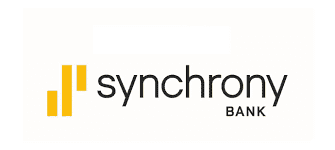
Liberty Savings Bank
Liberty Savings Bank was founded in 1889, and is a family-owned community bank in Ohio. It's a great option if you're looking for a high yield savings account that isn't run by a huge corporation! And, of course, your funds are FDIC insured.
Right now you can earn up to 4.60% APY with no monthly maintenance fees.
This account requires just $1 to open, and has no minimum balance requirements or monthly maintenance fees.
Read our full Liberty Savings Bank review here.
Quontic Bank
The Quontic High Yield Savings Account is a top pick because of their awesome rate and the fact that they are one of the only FDIC-insured banks with a CDFI designation.
Right now you can earn up to 4.50% APY with no monthly maintenance fees. You also get a great mobile app and mobile check deposit.
This account requires just $100 to open, and has no minimum balance requirements or monthly maintenance fees.
Read our full Quontic Bank review here.
Citizens Access
Citizens Access is an online savings account offered by Citizens Bank (who you may recognize from their Citizens Bank student loans).
While this account does offer a high APY, you do need $5,000 to open an account. And if you drop below that minimum, your interest rate drops as well. This account has no monthly fees.
Right now, you can earn 4.50% APY.
Read our full Citizens Access bank review here.
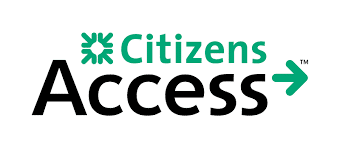
Continental Bank
Continental Bank is a Utah-based bank that originally focused on commercial loans for farming and manufacturing. But recently, it's expanded into offering consumer-focused products, including this competitive high-yield savings account. This account is in partnership with Raisin.
This account has just a $1 minimum deposit to open and no monthly maintenance fees.
Right now, you can earn 4.41% APY on your deposits. And yes, it's FDIC insured!
Read our full Continental Bank review here.
Barclays Bank
Barclays Bank has a fairly standard online savings account that's highly comparable to other high yield online savings accounts on this list.
Unlike others on this list, there is no minimum balance required to open an account with Barclays. They are about as traditional a bank as you get. Plus, they also don't charge any monthly fees as well.
Right now you can earn 4.35% APY.
Bonus Offer: Right now, you can earn a $200 Bonus for new customers with $25,000 minimum balance. Terms apply. To qualify for this $200 Bonus, you must be a new Barclays Savings customer, open an account March 4, 2024 – May 3, 2024, fund the account with at least $25,000 within the first 30 days of opening, and maintain the $25,000 balance for 120 consecutive days. After meeting these qualifications, the $200 bonus will be added to your account in approx. 60 days. Offer expires May 3, 2024. You may make multiple deposits from another financial institution to fund this account so long as at least $25,000 is deposited no later than 30 days from open date. Withdrawals which drop the balance below $25,000 could affect your bonus eligibility. The bonus will be treated as interest and Barclays could send you a Form 1099-INT for tax reporting. While there is no minimum deposit to open a Barclays Savings account, this bonus offer requires a $25,000 minimum deposit. Offer subject to change or cancellation without notice.
Read our full Barclay's Bank review here.
Capital One
Capital One is credit card company that has also become known for having top notch banking products. This includes having an extremely competitive online savings account.
Plus, if you already use Capital One 360 for other products, it could be an easy fit.
Right now you can earn 4.25% APY.
They only have $0 minimum to open, and no monthly account maintenance fees.
Read our full Capital One 360 Bank Review here.
HSBC
HSBC is a bank that has been around for a long time - but only recently making big strides in the United States. They are one of the largest and most robust banks on this list, and they have a great savings account with a competitive high yield.
Combine their high yield savings account with the fact that they have $0 monthly maintenance fees and great online banking, this should be a top choice!
Right now they offer one of the highest rates at 4.40% APY, with no minimum balance requirements! FDIC Insured.
Read our full HSBC Online Banking Review here.

American Express
American Express is more than a credit card company. American Express has Amex Savings, which consistently pays a top rate. It may not always be the best on this list, but it consistently is near the top, and that doesn't change much.
Plus, if you already use American Express for other products, it could be an easy fit.
Right now you can earn 4.30% APY.
They only have $1 minimum to open, and no monthly account maintenance fees.
Read our full American Express Bank Review here.
Ally
Ally Bank has always been a popular online savings option. They were one of the first truly friendly online banks. However, their rate isn't always at the top of the pack.
With rates declining, they are finally a bit competitive.
This account has no monthly fee or minimum balance requirements.
Right now, you can earn 4.20% APY.
Read our full Ally Bank review here.

PenFed
PenFed (which stands for Pentagon Federal Credit Union) is a nationwide credit union that originally was focused on military members and their families. However, today you don't have to be in the military to join - and there are multiple ways you can do it.
But given they are a credit union, you can get great rates and accounts!
Right now, you can earn 3.00% APY.
Their account has just a $5 minimum to open, and no monthly maintenance fees!
Read our full PenFed Credit Union review here.
What To Consider When Comparing Online Savings Accounts?
There are a few important considerations when comparing high yield savings account options. You may not be thinking about these, but we look at them all the time when comparing the best options.
Interest Rate (Or Annual Percentage Yield - APY)
The interest rate (or APY) is typically the most common thing you're going to look at when shopping for a savings account. You want to find the account that pays the highest amount - right?
In most cases, yes, a higher APY is always better. The higher the APY, the more interest you're going to earn on your deposits. However, if an account requires a high balance to earn the highest rate, and you can't meet that deposit level, you may want to consider another account where you can meet the requirements.
How Often Rates Change
Another factor to consider is how often interest rates change. The simple truth is, most of the banks on our list will move pretty consistently with each other. That could be up or down, depending on the Fed Funds Rate.
However, sometimes banks will change their rates because of their own needs, and that's what you want to avoid. We select banks on our list that are consistently at the top of the rate tables, so even if the rates are changing, you can typically find these banks among the best.
How Consistent A Bank's Offering Is
Consistency is key when it comes to rates. Rates will change, but you want to find a bank that is consistently near the top.
What you don't want is a bank that offers an amazing introductory rate, then quickly drops it after 6 months. You will find that, overall, this will hurt your returns because the total annual APY will be lower than you'd get with a bank that is consistent.
So, when comparing high yield savings accounts, make sure you're looking for banks that offer consistency, not promotional rates.
Minimum Balance Requirements
When comparing savings account options, you'll quickly notice that there are banks with no minimum balance requirements, and those with high minimum balance requirements. Sometimes, to earn the highest interest rate on your savings account, you need to meet certain deposit minimums. And sometimes those minimums can be really high - upwards of $100,000!
If you can't meet the minimum balance requirements or minimum opening deposit requirements to get the best APY, then you should consider an account where you can meet it. Yes, you might sacrifice a little bit of interest, but in the long run, you'll be better off!
Account Options
Finally, you'll want to look at the different account options available to you. What this means is:
- Does the bank offer physical branches or are they online only?
- How can you deposit cash?
- ATM access?
- How easy is it to get your money out of the account? Do they offer ACH or checks?
- How is the customer service? What are the customer service options - phone, chat, email, etc.?
- Do they have an online app?
These features aren't necessarily as important as the interest rate and balance requirements, but depending on your needs, they can make a big difference in how happy you are with your online savings account.
How Important Is A "High-Yield"?
A lot of people don't understand the difference a high rate can make - and as such, they stay at their old bank too long (losing money in the process).
The amazing thing about a savings account is that it's truly passive income. Just putting your money in a savings account earns you money - that's amazing. So you want to earn the most money possible.
Right now, the FDIC reports that the average interest rate on savings accounts nationwide is just 0.47% APY.
If you have $10,000 deposited, that means you'll earn $47 a year in interest.
But, if you open an account at the best rate on this list, you'll be earning 5.00% APY right now. That equals $500 per year in interest. That's a big difference of $453 for simply opening an account and moving your money over.
Frequently Asked Savings Account Questions
What is a savings account?
A savings account is a type of savings vehicle that is offered by banks, credit unions, and financial services firms (like brokerages). Savings accounts are federally insured, meaning your money is safe. These accounts also typically pay interest, more than you would earn keeping your money in other bank accounts, like a checking account. Savings accounts also typically limit how many withdrawals you can make each month, limiting their ability to be used other than for saving.
How does an online savings account work?
Online savings accounts work just like traditional brick and mortar bank accounts, except that everything is done online or via a mobile app. The benefit of this is that online accounts typically offer higher interest rates to savers - passing on the savings of not having a lot of branches.
What makes a savings account a high yield account?
The designation of a high yield savings account is for accounts that provide above average interest rates to their customers. In 2024, the top savings accounts provide over 5.00% APY, while the average interest rate is just 0.47% APY.
What is the best interest rate on a savings account?
The best interest rate on a savings account is over 5.25% APY, but that may be a promotional interest rate.
What are the fees charged to have a savings account?
The best savings account don't charge any type of monthly fees to use their account. However, some banks may charge monthly maintenance fees, unless specific balance requirements and/or deposit requirements are met.
How safe is my money in a savings account?
Money in a savings account is FDIC insured up to the FDIC insurance limits (typically $250,000 per person). Some banks may extend higher insurance limits on your account.
What is the limit on withdrawing money from a savings account?
Most savings accounts impose limits on withdrawals each month. Called Reg D, this is a federal rule that limits savings accounts withdrawals to just 6 per month. Some accounts avoid this by classifying themselves as a cash management account.
Can I lose money in a savings account?
In general, you cannot lose money in a savings account. As long as your balance is below the FDIC insurance limit, you cannot lose money. The exception is having money beyond the FDIC insurance limit, and the bank fails. In this rare scenario, you could lose money in a savings account.
How does a savings account compare to a CD?
A savings account is more liquid than a certificate of deposit, but typically provides slightly lower interest rates compared to the shortest duration CDs. With CDs, you must "lock--up" your money for a period of time, usually at least 3 months, but upwards of 6 years. In exchange for locking up your money, you get a higher interest rate than you would with a savings account. If you need the liquidity, then a savings account is the preferred savings vehicle.
What is the average interest rate on a savings account?
According to the FDIC, the average savings account pays just 0.47% APY on a savings account.
How do the Fed interest rates affect savings accounts?
When the Fed raises or lowers interest rates, banks adjust their savings account interest rates accordingly. In rising rate environments, banks will offer higher interest rates, and in declining rate environments, banks will lower their interest rates offered on savings accounts.
What is a promotional APY?
A promotional APY is the interest rate you can earn for a specific duration exchange for taking some specific action. For example, many banks offer new customers a promotional APY on their savings account for the first 6 months or one year. Then, after the promotional period, your APY will drop back down to the standard rate offered.
Final Thoughts
A high yield savings account can be a great way to save your money. You typically earn higher interest rates, but there are some restrictions above and beyond what you usually find for normal savings accounts. You can compare the differences between a savings account and money market here.
Just like any account, make sure you're opening the best savings account for your needs so you can reap the rewards.
Methodology
The College Investor is dedicated to helping you make informed decisions around complex financial topics like finding the best savings account. We do this by providing unbiased reviews of over 50 top banks and savings accounts for our readers, and then we aggregate those choices into this list.
We have picked savings accounts based on our opinions of how easy they are to use, their costs and fees, any interest rates and bonuses provided, and a variety of other factors. We believe that our list accurately reflects the best savings accounts in the marketplace for consumers.
Western Alliance Bank
¹ 5.36% annual percentage yield (APY) is accurate as of 1/17/2024 and subject to change at the Bank’s discretion. Minimum deposit required to open an account is $500 and a minimum balance of $0.01 is required to earn the advertised APY.
Varo
¹ Annual Percentage Yield (APY) is accurate as of November 1, 2023. Rates may change at any time without prior notice, before or after the account is opened.
² The requirements must be met within the Qualifying Period begins on the first calendar day of the month and ends at close of business (4:25 pm MST/ 3:25 pm MDT) on the last business day of the month. Meet the requirements in the current month to qualify to earn 5.00% APY for the following month.
³ Qualifying direct deposits are electronic deposits of your paycheck, pension or government benefits (such as Social Security or unemployment) from your employer or government agency. Tax refunds, government stimulus payments, Person-to-Person payments (such as Venmo), and funds deposited using a Varo routing number are not considered a direct deposit.
⁴ Your Varo Bank Account and Varo Savings Account balances must be greater than or equal to $0.00 at the end of the qualifying period.

Robert Farrington is America’s Millennial Money Expert® and America’s Student Loan Debt Expert™, and the founder of The College Investor, a personal finance site dedicated to helping millennials escape student loan debt to start investing and building wealth for the future. You can learn more about him on the About Page or on his personal site RobertFarrington.com.
He regularly writes about investing, student loan debt, and general personal finance topics geared toward anyone wanting to earn more, get out of debt, and start building wealth for the future.
He has been quoted in major publications, including the New York Times, Wall Street Journal, Washington Post, ABC, NBC, Today, and more. He is also a regular contributor to Forbes.
Editor: Clint Proctor Reviewed by: Richelle Hawley

